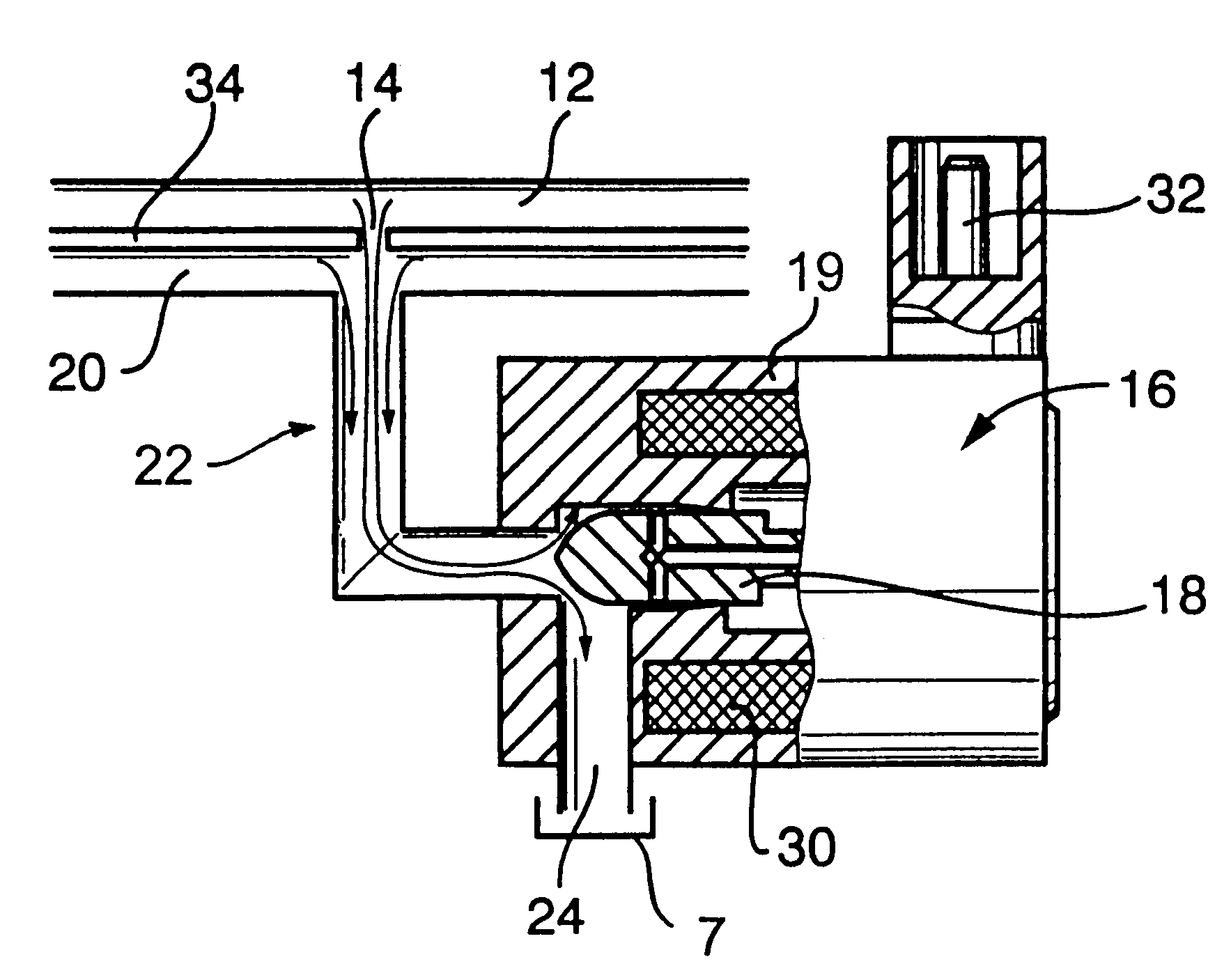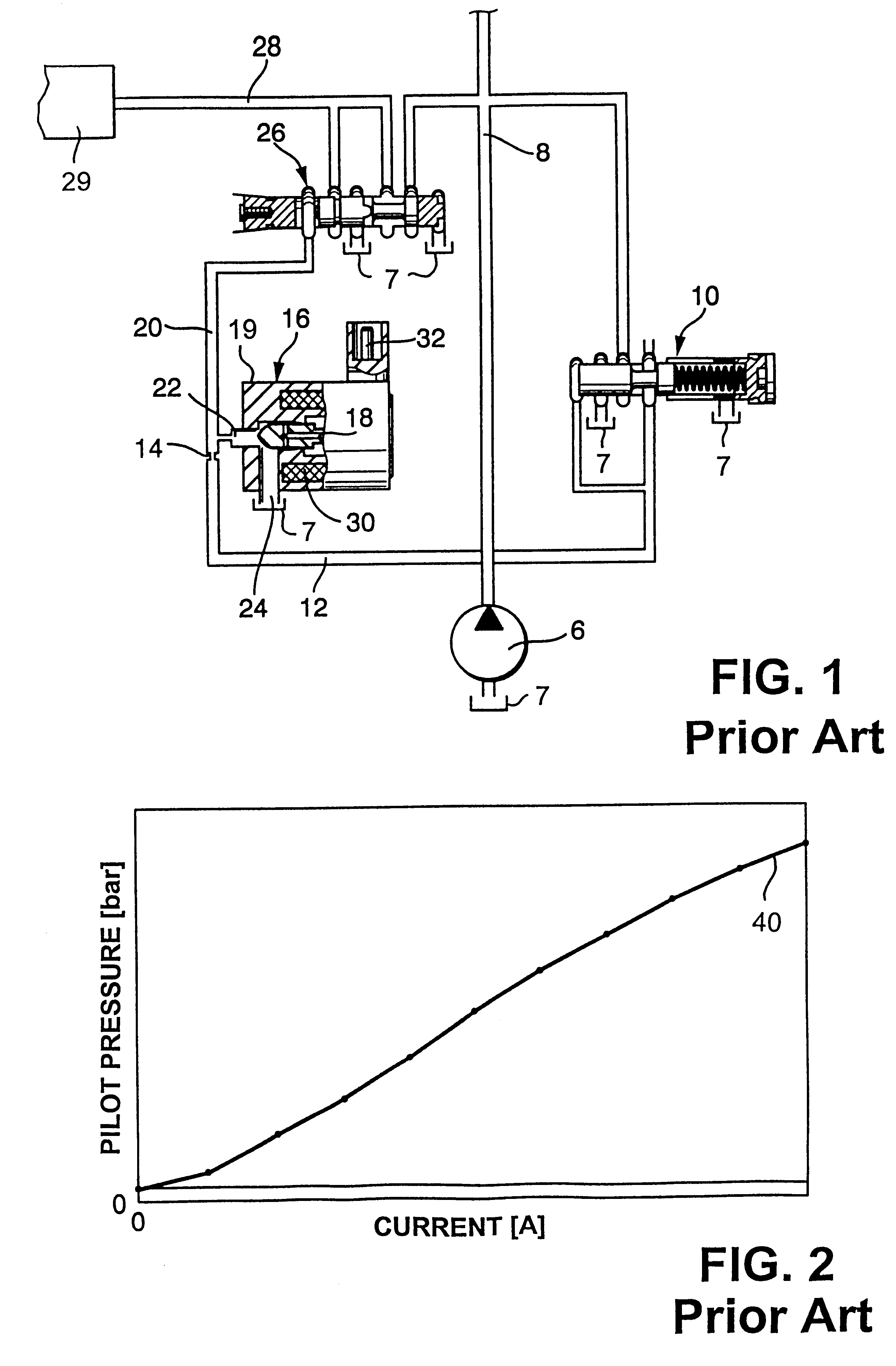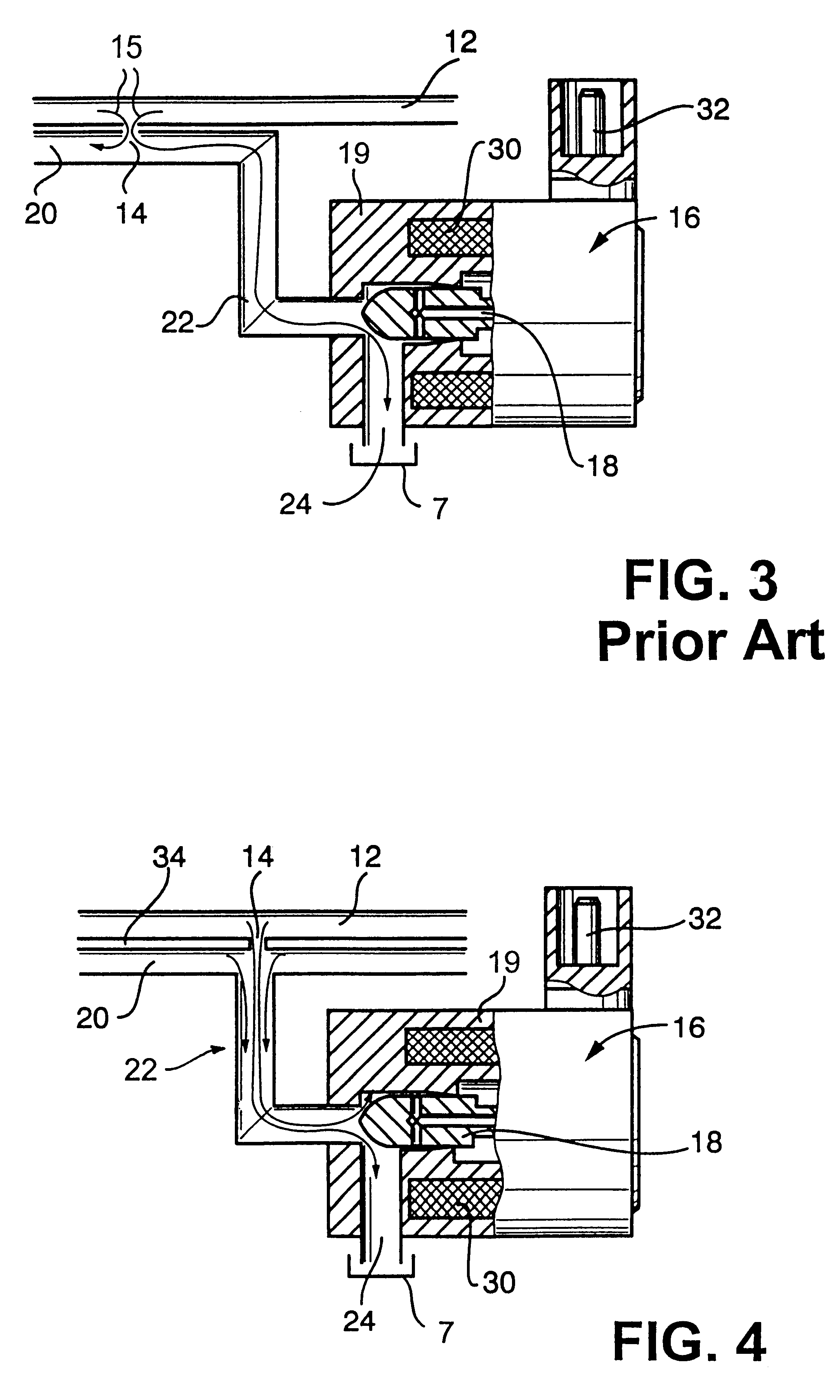Pressure regulating method and apparatus
a technology of pressure regulation and pressure conduit, which is applied in the direction of valve details, fluid pressure control, instruments, etc., can solve the problems of high percentage of kinetic energy of fluid (such as oil) being ultimately converted into heat, and the pressure in the pilot conduit (between the pilot valve and the regulating valve) cannot match the pressure of fluid in the constant-pressure conduit, etc., to achieve simple, compact and simple, reduce the effect of pilot pressur
- Summary
- Abstract
- Description
- Claims
- Application Information
AI Technical Summary
Benefits of technology
Problems solved by technology
Method used
Image
Examples
Embodiment Construction
FIG. 1 shows certain component parts of a conventional apparatus which includes a pump 6 serving to draw hydraulic fluid (such as oil and hereinafter referred to as fluid) from a source 7, e.g., a sump. The outlet of the pump 6 delivers a stream of fluid into a main conduit 8 at a pressure which can exceed the pressure required in a control conduit 28 serving to deliver at least one stream of pressurized fluid to at least one inlet of a consumer 29, e.g., a continuously variable transmission (CVT) of the type disclosed in the commonly owned U.S. Pat. No. 5,667,448 or 5,674,155.
The main conduit 8 supplies pressurized fluid to an inlet of a constant-pressure valve 10 (this valve can be replaced with a pressure regulating valve, not shown) having an outlet connected with the inlet or intake end of a (first) constant-pressure conduit 12. The valve 10 supplies fluid at an at least substantially constant pressure. The discharge end or outlet of the constant-pressure conduit 12 delivers fl...
PUM
 Login to View More
Login to View More Abstract
Description
Claims
Application Information
 Login to View More
Login to View More - R&D
- Intellectual Property
- Life Sciences
- Materials
- Tech Scout
- Unparalleled Data Quality
- Higher Quality Content
- 60% Fewer Hallucinations
Browse by: Latest US Patents, China's latest patents, Technical Efficacy Thesaurus, Application Domain, Technology Topic, Popular Technical Reports.
© 2025 PatSnap. All rights reserved.Legal|Privacy policy|Modern Slavery Act Transparency Statement|Sitemap|About US| Contact US: help@patsnap.com



